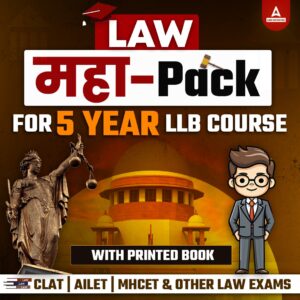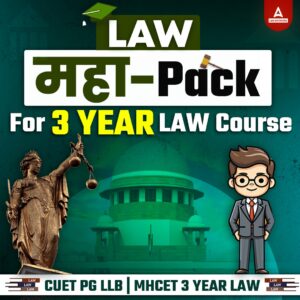LAT Logical Reasoning Most Expected Questions: Cracking the CLAT Logical Reasoning section is like solving a puzzle that holds the key to your dream law school. With the CLAT 2026 exam approaching on December 7, 2025, students must be looking for the most expected questions that could impact their score. No worries, we’ve got you covered! Here we have provided a few questions that are most likely to be asked in the exam.
Logical reasoning doesn’t just test memory; it challenges your ability to think critically, analyze situations, and solve problems under pressure. That’s why practicing the right questions is crucial. In this article, we have gathered the most expected CLAT Logical Reasoning questions to help you improve your preparation and build your confidence for exam day.
CLAT Logical Reasoning Exam 2026
The CLAT Logical Reasoning section is a crucial part of the exam. It tests a student’s ability to think clearly and solve problems quickly. In this section, the Consortium of National Law Universities (NLUs) features short passages followed by questions about arguments, assumptions, conclusions, and critical thinking. It is included to evaluate how well future law students can analyze situations and make logical decisions. The Common Law Admission Test (CLAT) is open to students who have completed or are currently in Class 12, and anyone with a passion for law can apply. The logical reasoning paper typically includes passage-based questions that require careful reading, logical analysis, and effective time management to score well.
CLAT Logical Reasoning Most Expected Questions
In the Common Law Admission Test (CLAT), the Logical Reasoning section stands as a highly scoring section where familiarity with typical question patterns simplifies exam preparation. The CLAT Syllabus for Logical Reasoning includes five essential topics that students need to master: critical reasoning, statement-conclusion, syllogisms, cause-effect, and passage-based questions. Students who concentrate on these core topics will develop efficient practice methods that help them maximize their exam time.
The combination of expected questions needs to be supplemented with mock tests, CLAT previous year Question papers, and practice sets for students to achieve better speed and accuracy. Once students pass the CLAT exam, they gain access to top law universities, which offer BA LLB, BBA LLB, and BCom LLB, and LLM programs that lead to professional legal success.
CLAT Logical Reasoning Syllabus / Topics
| Topics | Type of Questions |
|---|---|
| Passages-based Reasoning | Conclusion, Inference, Strengthen/Weaken |
| Arguments & Assumptions | Identify Assumptions, Logical Gaps |
| Critical Reasoning | Course of Action, Cause & Effect |
| Statement & Conclusion | Deductive Questions |
| Analogies / Logical Sequence | Pattern-based Questions |
Most Expected Questions for CLAT Logical Reasoning
All the students who are willing to take the upcoming CLAT Logical Reasoning exam and are looking for the right place to check the most expected questions that could be asked in the exam. So you have reached the right place. Here we have provided the most expected questions for the upcoming CLAT Logical reasoning exam:
Passage 1
While men and women are both considered to be more capable as they get older, only women bear the brunt of being seen as “less warm” as they age, new research has found. This series of studies is reportedly the first to look at both gender and age to determine how perceptions of women and men differ. “It’s just stunning… These stereotypes are so hard-wired and deeply entrenched that they come out even when absolutely identical information is provided about a man and a woman,” Jennifer Chatman, Distinguished Professor of Management at UC Berkeley’s Haas School of Business, said.
In an analysis of professors’ evaluations, female professors witnessed a decline as they moved from their 30s to 40s, hitting an all-time low around the age of 47. All this while, the evaluation of male professors remained consistent. Interestingly, after the age of 47, the evaluations for women increased again, becoming equal with those of men around the early 60s. “At that point, there are different stereotypes of women, and they may benefit from being seen as more grandmotherly,” said Laura Kray, faculty director of the Center for Equity, Gender, and Leadership at Berkeley Haas and an author of the study.
Women around the age of mid-30s to late 40s also face what is called “the motherhood penalty,” where assumptions around parenting duties lead people to believe women are less committed to their careers than men. This has several repercussions, most particularly evident in hiring, promotions, and wages. Women executives further pointed out that they face “hyper-scrutiny” and “scepticism,” which harks back to perceptions of likeability versus agency.
Gendered networks in the workplace, with men gaining greater access to senior leaders, become cemented mid-career, posing another difficulty for working women. Negative perceptions of women in middle age can also be linked to stereotypes around menopause. In 2008, psychologists studied the attitudes of people towards women in different reproductive stages. They found that while the pregnant women or the woman with the baby were thought about in glowing terms, menopausal women were associated with negative emotions, illness, and ageing.
Answer the Following Questions based on the Above passage:
Q1. Which of the following is most likely to be true if the author’s statements about gendered networks in the workplace are true?
- Mid-career women do not find it as easy to get access to senior leaders, who are usually male, as their male colleagues. They therefore find career progression or new opportunities easier to come by.
- Mid-career women find it easier to get access to senior leaders, who are usually male, as their male colleagues. They therefore find career progression or new opportunities easier to come by.
- Mid-career women do not find it as easy to get access to senior leaders, who are usually male, as their male colleagues. They therefore find career progression or new opportunities harder to come by.
- Mid-career women find it easier to get access to senior leaders, who are usually male, as their male colleagues. They therefore do not find career progression or new opportunities harder to come by.
Q2. Which of the following is most likely to be an outcome of what the author describes as the “motherhood penalty”?
- People are more hesitant to hire men from their mid 30s to their late 40s but may be more willing to hire women of a similar age.
- People are more hesitant to hire women from their mid 30s to their late 40s but may be more willing to hire men of a similar age.
- Women from their mid-30s to their late 40s always prioritise parenting responsibilities and so are not really interested in pursuing a career.
- Women who have children are less committed to their careers than men.
Q3. If professors’ evaluations are the most important criteria in awarding promotions, then which of the following would be the most likely outcome, based on the information provided in the passage?
- Male professors are likely to be promoted at an even rate throughout their career, while women professors would experience a lower likelihood of promotion in the mid-career stage.
- Since there is a wide disparity between the evaluations that male and female professors receive, the practice of relying upon such evaluations will quickly be abandoned.
- Male and female professors will receive promotions at a similar rate throughout the course of their career.
- Women professors are likely to be promoted at an even rate throughout their career, while male professors would experience a lower likelihood of promotion in the mid-career stage.
Q4. Which of the following is the author most likely to disagree with?
- Women going through menopause often quit the workforce voluntarily.
- Women going through menopause are more likely to be perceived negatively at the workplace and to have difficulty achieving professional success.
- Women going through menopause should be permitted to take a mid-career sabbatical.
- Women going through menopause are more likely to be perceived positively at the workplace and to achieve professional success.
Q5. Which of the following, if true, would most strengthen the main argument in the passage?
- Several independent studies conducted in different countries have shown that women in the workplace are perceived positively and are favourably treated as they age.
- Several independent studies conducted in different countries have shown that women in the workplace are perceived negatively and are unfairly treated as they age.
- The studies mentioned in the passage have been discredited after they were published, and no reliance should be placed on them.
- The studies mentioned in the passage were conducted on very small sample sets and cannot be used to make general statements about the difference in perception between men and women.
Q6. Which of the following, if true, would most weaken Laura Kray’s arguments?
- Women professors perceived as being ‘grandmotherly’ are regarded as being likeable and caring.
- Women professors perceived as being ‘grandmotherly’ are treated better by their colleagues and students.
- Women professors perceived as being ‘grandmotherly’ are regarded as being slow, inefficient, and outdated in their field.
- Women professors perceived as being ‘grandmotherly’ are regarded very highly and receive much more respect than younger women professors.
Passage 2
The depreciation of an economy’s currency is not a matter of concern in itself. The decline in value against major currencies has to be viewed within a set of macroeconomic factors. The recent depreciation of the Indian rupee is a case in point. The rupee has been depreciating for a long time. What are of concern now are the rate at which the depreciation is occurring and the underlying factors causing the change. The Russia-Ukraine war has disrupted supply chains causing commodity prices to rise, leading to a worldwide hardening of inflationary trends.
This, in turn, has caused major central banks to raise interest rates, forcing investors back to the safe haven of the US dollar. For India, these headwinds from the global economy have caused several problems. The rise in international prices, especially of crude oil, has led to a higher import bill and, hence, a greater demand for dollars. Higher interest rates in developed country markets have caused a significant outflow of portfolio investments from India, aggravating the already climbing demand for dollars from a rising import bill. By May 2022, foreign institutional investors had pulled out Rs. 1.50 lakh crore from Indian markets.
In the face of these pressures, the rupee, left to itself, would decline in value as the rupee-price of a dollar would increase substantially. One way the Reserve Bank of India could stem the tide would be to sell off dollars in the market to ease the supply situation. However, this would mean that while the value of the rupee could be contained, the nation’s foreign exchange kitty would start to erode further. The RBI has been doing exactly that. The challenge before the RBI is this: how much to let the rupee depreciate and how much to intervene to prop it up? Too much depreciation would raise domestic inflation rates as the rupee-price of imports, especially oil, would raise costs of production.
It could trigger a rise in policy-controlled interest rates while closely monitoring inflationary expectations. The biggest challenge is to navigate unpredictable international economic shocks in the near future. The Indian economy’s health is not exactly at its best. Exports may not be able to take advantage of a falling rupee since international demand is expected to stagnate. India’s growth and employment situations are yet to stabilise to what they were about a decade ago. The RBI has difficult choices: controlling inflation versus stimulating growth and stabilising the rupee without severely diminishing the economy’s foreign exchange kitty.
Read the above Passage before answering the following Questions:
Q7. Which of the following is the author most likely to agree with?
- It is a major cause for concern if an economy’s currency is depreciating.
- Currency depreciation is not a reason for worry in itself, but if macroeconomic factors are not good, there may be a cause for concern.
- The fact that the Indian rupee is witnessing a decline in value against major currencies is very worrisome.
- A central bank must always do everything in its power to stem the slightest depreciation of an economy’s currency.
Q8. Based on the author’s arguments, which of the following, if true, would reduce the decline in value of the rupee?
- Appointing a new Governor for the RBI who has a better sense of how to control inflationary trends.
- A steep increase in commodity prices and the continued disruption of supply chains.
- A reduction in worldwide inflationary trends and the reduction of interest rates in developed country markets.
- The RBI buying as many dollars as possible from the market.
Q9. Which of the following, if true, would most weaken the author’s arguments?
- The Indian economy has been affected by global inflationary trends and the increase of interest rates in developed country markets.
- Since developed country markets have increased their interest rates, global investors have pulled their investments out of other economies, and routed them to such developed country markets.
- As the demand for US dollars increases, it is likely the rupee-price of a dollar would increase substantially.
- The Indian economy and currency are highly protected and have been insulated from the effects of global inflationary trends and the increase of interest rates in developed country markets.
Q10. Which of the following, if true, would most strengthen the author’s arguments for why Indian exports may not be able to take advantage of a falling rupee?
- Economies across the world are witnessing a slowdown, and in such economies, demand for imports decreases substantially.
- Economies across the world are booming, and there is an increasing demand for Indian exports.
- A reduction in the volume of exports would be more than offset by the increased value of dollars that Indian exporters would earn.
- Countries across the world have managed to find ways to insulate themselves from the effects of the Russia-Ukraine war and will need a lot of Indian imports to sustain their new growth models.
Q11. Based on the author’s arguments, which of the following must necessarily be true?
- The continuing depreciation of the Indian rupee at its current rate, coupled with worldwide inflationary trends, would result in immense political instability in India, and consequently, in all of South Asia.
- If nothing else is done, the rise of interest rates in developed country markets, coupled with hardening of inflationary trends across the world, will result in a fall in the value of the rupee against the dollar.
- If inflationary trends continue to harden across the world, and if interest rates in developed country markets continue to rise, portfolio investors will increase their investments in India, and this will have a positive impact on India’s foreign exchange reserves.
- If nothing else is done, the rise of interest rates in developed country markets, coupled with hardening of inflationary trends across the world, will result in a rise in the value of the rupee against the dollar.
Q12. Which of the following is the author most likely to agree with?
- The RBI must not focus solely on preventing the depreciation of the rupee, as that may result in negative impacts on other aspects of the economy.
- The RBI must focus solely on preventing the depreciation of the rupee at all costs, since it is by far the most important indicator of the health of the Indian economy.
- Periodic inflationary trends are normal in any economy, and the RBI need not worry about the inflationary effects in the Indian economy caused by the depreciation of the rupee.
- The RBI need not do anything to reduce the rate of depreciation of the rupee, since the depreciation of an economy’s currency is not a matter of concern in itself.
Passage 3
Students decide to attend college for several reasons. These reasons include career opportunities and financial stability, intellectual growth, a time for self-discovery, norms, obligations, and social opportunities. Outside demands in society, such as technology changes, and increased educational demands also drive the need for more students to attend college. The students then spend the next few years trying to discover a path and find their way so they can become successful.
The transition to college presents students with many new challenges, including increased academic demands, less time with family members, interpersonal problems with roommates and romantic interests, and financial stress. Competitive academic work and uncertainty about future employment and professional career were also noted as sources of stress. The transition to college represents a process characterized by change, ambiguity, and adjustment across all of life’s domains. The transition towards independence and self-sufficiency has been characterized as ‘stress-arousing’ and ‘anxiety-provoking’ by many college students.
Failure to accomplish and develop these characteristics of development and maintain independence may result in life dissatisfaction. Emerging adulthood has also been noted to augment college students’ vulnerability to stress. Many students experience their first symptoms of depression and anxiety during this time, but a growing problem is that college campuses do not have enough resources to help all of these students. It has been noted that 75% to 80% of college students are moderately stressed and 10% to 12% are severely stressed.
Answers to the Following Questions are Mentioned in the Above Passage:
Q13. What according to you is the objective of the study of the present paragraph?
- To map the various stages of pressure points of adulthood in the process of education.
- To narrate the anti-family agenda in the current education system.
- To pinpoint the obstacles targeted against meritorious students.
- All of the above
Q14. Which factors as per the author cause more stress amongst college students?
- Pressure from parents and society towards greater educational needs and increased competitive academic work.
- Failure to develop successful romantic interests, financial constraints and interpersonal issues with room-mates.
- Failure to adapt to the transition to college life and to adjust various life domains in tune with needs and requirements of college life.
- Inability to manage time constraints and the uncertainty pertaining to their future.
Q15. Which of the following fall closest to the underlying assumption in the present study?
- Problem-solving ability amongst college students is negatively associated with symptoms of depression and anxiety.
- Students lean towards unhealthy coping skills in order to try to lower the stress that they experience.
- Romantic interest is an anti-dote for stress amongst the students in the colleges.
- Stress is subjective for each student.
Q16. Suggest a suitable title for the paragraph from amongst the given titles:
- Triumph and Turbulence of College Education System
- Negative impact of College Education System
- Negligence of Stress Management by parents
- Unemployment and Mental Instability
Q17. With reference to the above paragraph, which of the following offers the most plausible solutions as a coping up mechanism for college students?
- Individual students should approach counsellors for coping up with stress.
- Keeping in view that large number of students are experiencing stress, colleges must take steps reduce course curriculum and peer pressures.
- College authorities shall provide access to counseling and every student experiencing stress must engage in some form of coping mechanism to alleviate stress.
- The students must learn to differentiate between short term and long-term stress.
Passage 4
An unintended and unjust consequence of the Protection of Children from Sexual Offences Act, 2012 is its widespread persecution of teenage lovers. This law raised the age of consent from 16 to 18 years, while defining persons below 18 years as children. Consequently, when two 16-year-olds are romantically and sexually involved, but the girl’s family doesn’t approve the affair and files a police complaint, her consent has zero legal validity.
And the consensual relationship morphs into a case of statutory rape. The Allahabad High Court has indicated how its “conscience” is concerned by such severe POCSO provisions being drawn by teenage lovers simply on the basis of family disapproval. The High Courts of Delhi, Madras and others have made similar observations in recent years and also pointed to amendments to the law that can help reduce its injustices. One suggestion that has gathered broad support is to push back both the cut-off for childhood and the age of consent to 16 years.
Given that the NCRB data shows around half of POCSO cases falling in the 16-18 years age group, such an amendment is overdue. Minimizing the prosecution of consensual romances would also leave a logjammed system with more space to pursue actual sexual assault cases. The broader goal here is respecting the rights of adolescents and young adults. Their romantic and sexual autonomy needs greatly increased recognition in India.
Carefully go through the Above Passage to answer the Following Questions:
Q18. “Minimising the prosecution of consensual romances would also leave a logjammed system with more space to pursue actual sexual assault cases”. In the context of the statement, which of the following strengthens the author’s opinion?
- There are many unreported sexual assault cases.
- Speedy prosecution of sexual assault cases is desirable.
- Consensual romance, in some cases, can amount to sexual assault.
- Sexual assault and rape are different.
Q19. What has the author conveyed regarding the prosecution of statutory rape in India?
- Statutory rape does not violate the romantic and sexual autonomy of young adults.
- Statutory rape must be met with stricter punishment.
- Statutory rape must be abolished.
- Statutory rape is a relic of Victorian morality.
Q20. As per the above passage, which of the following does not correctly represent the author’s view regarding the widespread persecution of teenage lovers under the POCSO Act?
- Teenagers have the right to love as much as adults.
- Police complaints of teenage lovers may lead to their harassment.
- Consent of minor girls do not have legal validity.
- Consent of minor girls have legal validity.
Q21. In the above passage, which of the following has concerned the “conscience” of the Allahabad High Court?
- Carelessness of teenage lovers.
- Threat to the safety of teenage lovers.
- Impact on mental health of teenage lovers.
- Harassment of teenage lovers by their families.
Q22. As per the above passage, which of the following is a major challenge in the implementation of the POCSO Act?
- Speedy prosecution of cases.
- Respecting the rights of adolescents and young adults.
- Counselling of adolescents and young adults.
- Imposition of stringent punishment.
Preparation Plan for CLAT Logical Reasoning Exam
All those students who are willing to take the upcoming CLAT Logical Reasoning exam and are confused about how to begin the preparations. No worries! Students can check the well-explained CLAT Logical Reasoning preparation plan below:
- Start with Basics – Understand arguments, assumptions, inferences, and conclusions before attempting tough questions.
- Daily Reading Habit – Read newspapers or editorials for 20–30 minutes to improve comprehension and critical thinking.
- Practice Passages – Solve at least 3–4 logical reasoning passages daily to build speed and accuracy.
- Focus on Previous Papers – Go through past CLAT papers to understand the pattern and difficulty level.
- Mock Tests Weekly – Attempt 1–2 CLAT mock tests for Logical Reasoning exam preparation every week and analyze mistakes.
- Stay Stress-Free – Keep short study sessions, take breaks, and revise regularly instead of last-minute cramming.

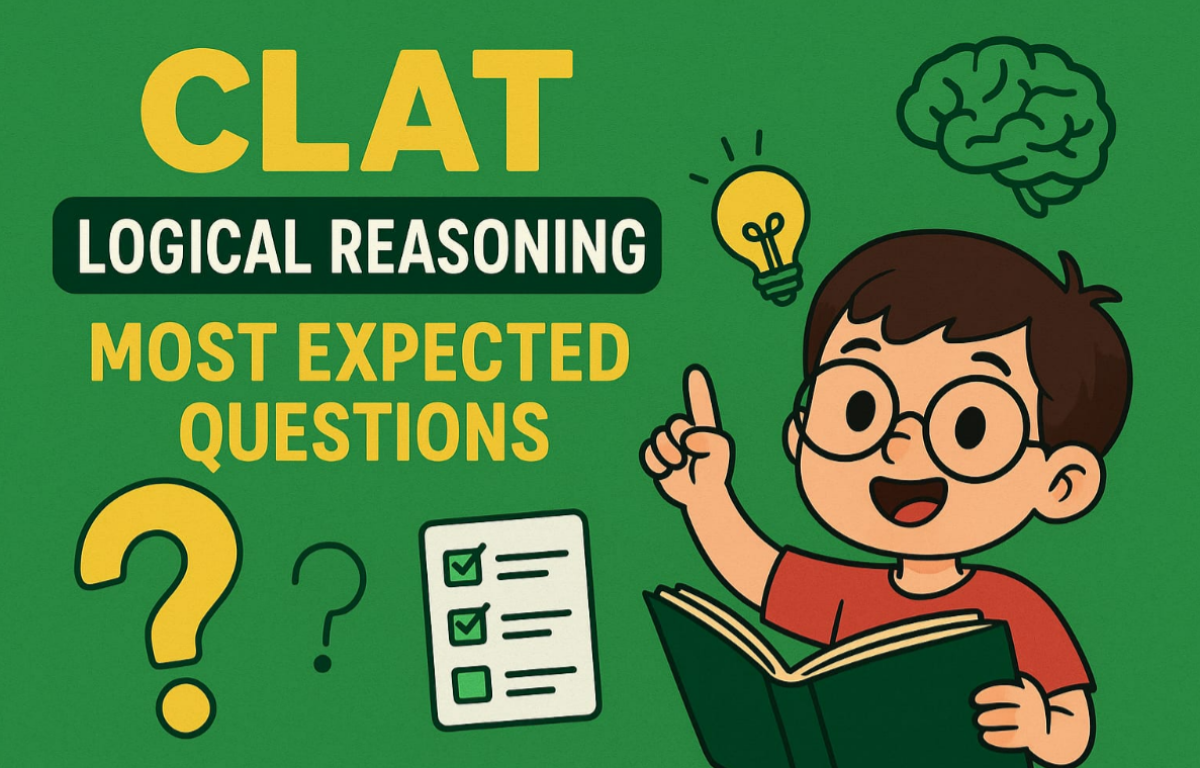

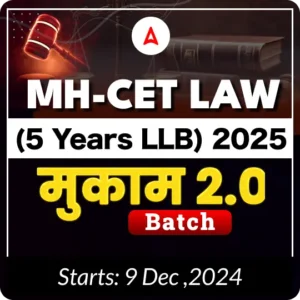







 CLAT Colleges 2026 List: Check Top Unive...
CLAT Colleges 2026 List: Check Top Unive...
 CLAT Sample Papers 2026 Released by Cons...
CLAT Sample Papers 2026 Released by Cons...
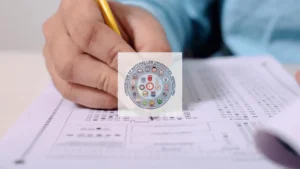 Download CLAT Previous Year Question Pap...
Download CLAT Previous Year Question Pap...
